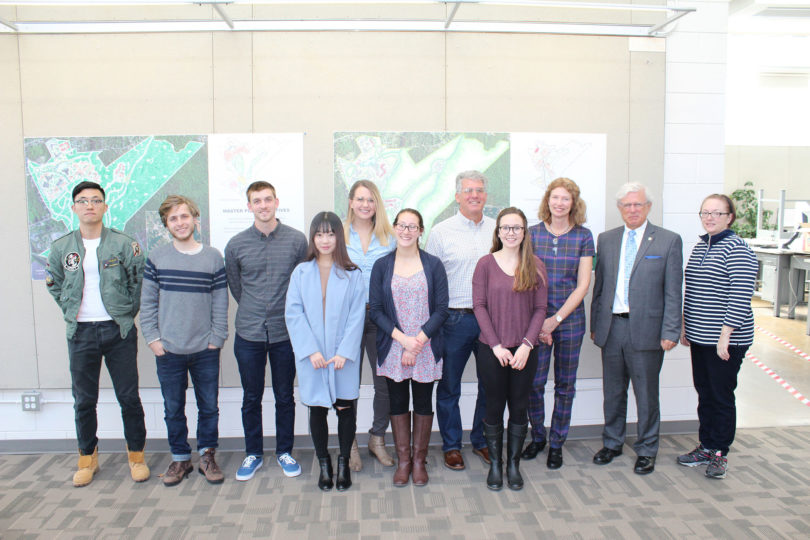The College of Environment and Design has been helping with the campus design of East Georgia State College in Swainsboro, allowing UGA students to get valuable hands-on experience in the process.
Over three semesters, 65 CED students in three studio classes worked on a practical and comprehensive master plan for the college’s growing 249-acre college in southeast Georgia. Students met with EGSC’s president, board members and students, using feedback to create a road map to meet new requirements and a growing campus population.
“The plan provides a vision for the future of EGSC’s physical campus and is consistent with the history and unique mission of the college. Having this master plan will enable the college to grow its physical campus in a responsive and sustainable manner,” said Bob Boehmer, East Georgia State College president.
Faculty members Danny Sniff, Georgia Harrison Hall, Donnie Longenecker and Alfie Vick each dedicated semesters in their design classes to East Georgia State College. CED doctoral candidate Leslie Palacios served as a facilitator for this project, collecting information on the history of the area and the history of EGSC specifically, and pulled together GIS data, old maps and census data that would inform the class design efforts.
In Vick’s classes, graduate students used the Swainsboro campus to participate in the Environmental Protection Agency’s 2016 Campus Rainworks Challenge. Vick’s students concentrated on protecting and highlighting the unique ecological aspects of the campus in their designs.
During the spring 2017 semester, the Community and Place design studio, under the direction of Hall and Sniff, conducted further site inventory and analysis, focusing on building usage and how people move through the campus sidewalks, drives and roadways. Each student created a master plan for the campus, all of which were presented to the college administration. Four designs were selected, feedback was combined and a single composite design was produced.
To conclude the project, the undergraduate Urban Design studio, taught by Longenecker, looked at potential landscaping, athletic and recreation venues and inviting outdoor spaces that would enhance the college experience for the EGSC student body, faculty and staff.








